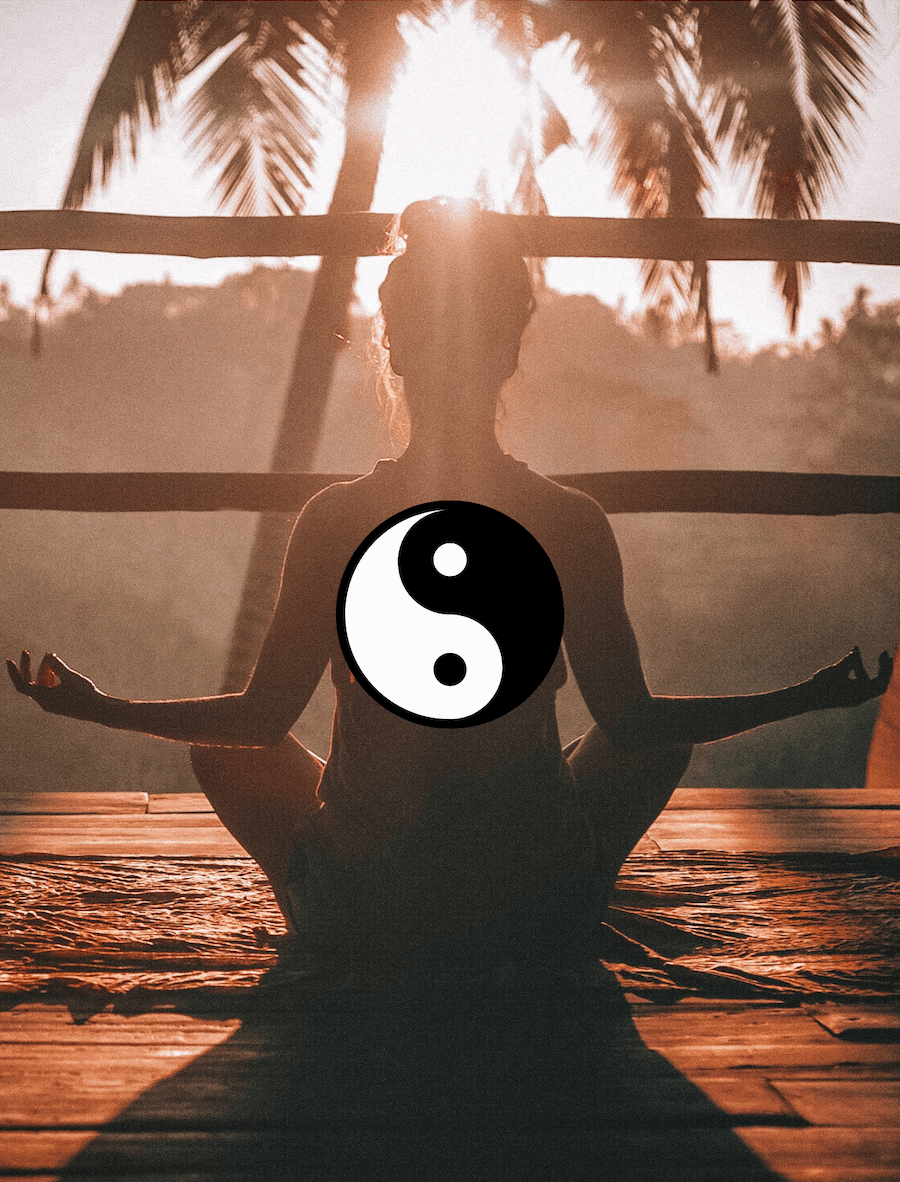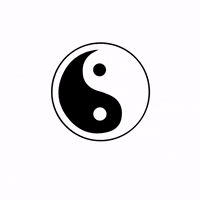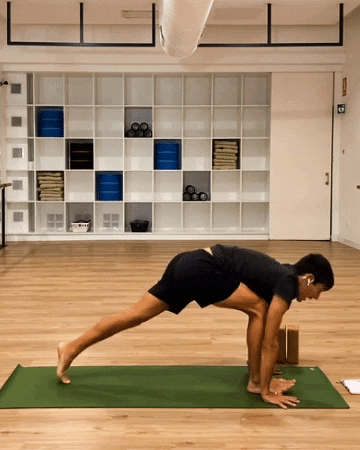Should You Practice Yin Yoga? Here's 7 Big Benefits

Written by: Isabela Malatrasi
🧘♀️ 🧘♂️ Within the infinite discipline of yoga, there are different types of practices...
Studios around the world often hold classes like vinyāsa flow, ashtanga, or kundalini yoga...
But today, we're going to focus on a not-so-well-known practice called yin yoga.

So, what is it ?
And what are some of the physical & mental health benefits observed by experts and researchers?
Find out more by scrolling below 👇
What is Yin Yoga?
The word "yin" comes from the Chinese philosophy of Taoism and the concept of yin and yang ☯️ - which describes opposing universal forces that give each other balance.
Yang is the light part of the symbol... and yin is the dark part.

In the context of movement... Yang is often described as the active, or solar ☀️, energy...
And Yin represents the receptive, or lunar 🌙 , energy.
So, when thinking holistically, you can see yin yoga as a slow-paced, meditative practice designed to receive inner harmony and growth, rather than to take it.
This restorative, relaxing style can help you slow down from a fast-paced lifestyle by holding simple poses for longer time (usually 5-10 minutes).

It also teaches how to breathe through discomfort, while targeting the deep connective tissues in our bodies.
In traditional Chinese medicine, there's a belief that Qi (energy) runs through our bodies...
And this movement focuses on the connective tissues (tendons, fasciae, ligaments) to create space for this energy & activate the parasympathetic nervous system.
By holding challenging yin postures, we could work with these rarely used tissues to release tension in the body and mind & let energy flow freely.
It's important, however, while holding these postures to know the difference between discomfort from pain, as you should listen to your body and respect your limits.
Understanding Yin and Yang in Yoga - Vinyasa & Yin
While yin yoga is understood by the Taoist concept as a passive, "cool," and downward moving...
Yang yoga (vinyāsa flow, ashtanga) can be understood as the active, "hot," and upward moving.
It's popularly to say that with yang, YOU are doing yoga... while with yin, YOGA is "doing you."

As the active style, yang yoga focuses more on the outer, visible muscles.
Just like in the philosophy, these different practices are complementary... and could have unique benefits when combined.
If you've been focusing mostly on yang, here's some reasons to incorporate the other part:
Health Benefits of Yin Yoga
There are many reason you might want to try this practice for both your physical and mental wellness:
Benefits for the Body
1. Improve Flexibility
This is one of the best ways to improve flexibility and release stress in tight spots of your body, especially the hips, pelvis and the lower spine.
According to the science behind yin yoga, this improvement happens because long holds can lengthen your fascia, or the connective tissue around your muscles.
This fascia needs at least 120 seconds of sustained pressure to start to change.
2. Improve Join Health & Stretch Connective Tissues
According to one of the most renowned yogis in the World, Paul Grilley... yin yoga is meant for the joints, not the muscles.
So, when you stay in poses for a longer time, you are stretching the connective tissues around your joints to give them more strength and mobility.
3. Pain Relief
Recent research has indicated that yoga is scientifically valid for managing pain, as many practitioners have known since ancient times.
This study notes the small, but growing body of randomized clinical trials that reveals yoga's promise to treat persistent pain conditions.
One randomized trial in particular showed that a 12-week yoga program for adults with lower back pain led to greater improvements in back function than did usual care.
And when yin yoga incorporates these types of movements, it can also be a tool for relief.
4. Disease Prevention
One study showed that yin yoga helped to decrease levels of adrenomedullin (ADM), which is a biomarker associated with disease and premature mortality.
It could also help boost circulation, which could help in the fight against cardiovascular disease.
This reduced risk shows that the positive health effects of this exercise could be, literally, lifesaving.
Mental Health Benefits
5. Reduced Stress, Anxiety, Depression, and Sleep Problems
Research like this and this has also shown that a yin yoga regiment helped stressed adults to reduce perceived stress & increase mindfulness in the long term.
It's also been observed to reduce the subjective experience of sleep problems, depression, and anxiety.
These results may have to do with some components of yin yoga, like:
A focus on the breath
Staying mentally present in the moment
And encouraging the body and mind to slow down toward a calm state
6. Balancing Emotions
As mentioned, this practice forces you to slow down, helping you move into more inner stillness.
This slow pace of yoga can create a mindfully meditative state, which has been shown to improve emotion processing, including emotion intensity and emotional memory, without any negative effect on the emotions of healthy practitioners.
So, it could provide space to allow emotions, thoughts, and sensations that we usually do not often have at top of mind — allowing us to connect with hidden emotions in a soft way, without being overwhelming.
7. Higher mental focus and energy levels
This style incorporates mindfulness and breathwork, which have been shown to improve cognitive performance, focus, and attention span in research like this or this.
So, yin yoga could share in the observed benefits of these elements.
There's also a lot of anecdotal evidence from practitioners to suggest it could offer the feeling of increased energy.
The level of discipline and concentration needed to perform the poses, plus the resulting physical changes in the body, could contribute to a felt sense of better focus and energy from exercise.
Conclusion
So, yin yoga has the potential to help yogis of any level or age to develop a fuller practice.
If you are looking for increased flexibility, more calm, or something to complement your active “yang” movements...
Then you could give it a try, and open yourself up to greater balance.
---
At UltimateHuman.Org, we talk about what you need to look, feel, and be your best self.
For more on the latest in biohacking, anti-aging, longevity, and health... Join the community by clicking below 👇
